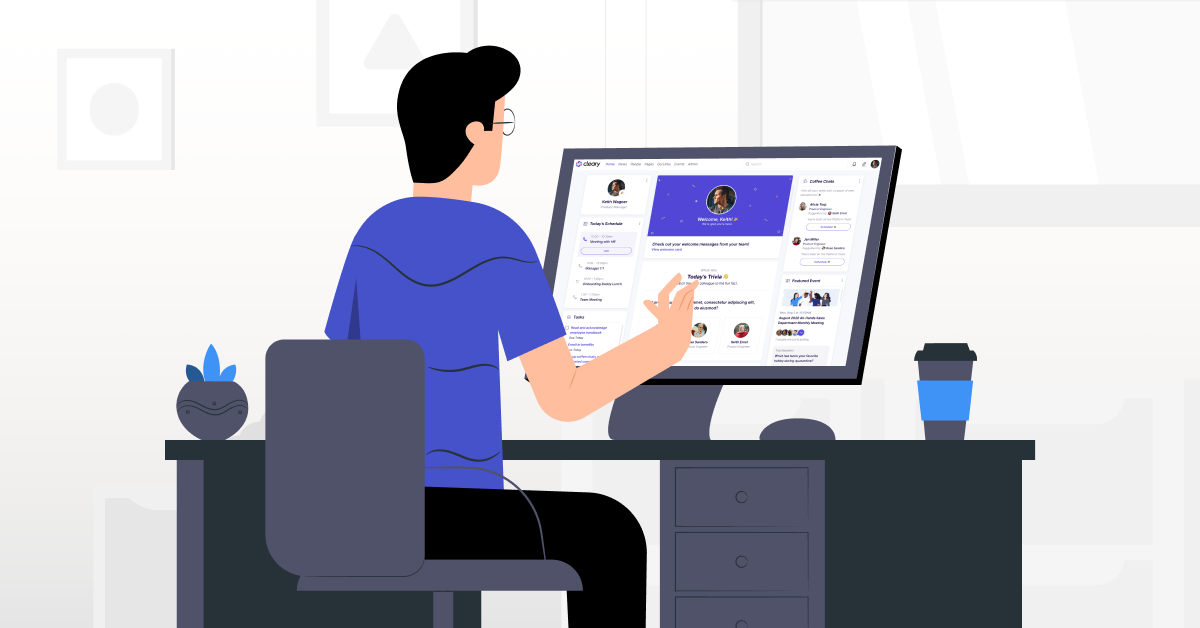In the rapidly evolving landscape of the modern workplace, the concept of a ‘social intranet’ has emerged as a pivotal tool in reshaping how employees interact, collaborate, and stay connected, particularly in hybrid work environments. But what exactly is a social intranet, and why is it becoming an indispensable element of the employee experience?
At its core, a social intranet is a dynamic, interactive platform that transcends traditional intranet capabilities. Unlike the static, one-way communication channels of the past, social intranets offer a multifaceted digital space where employees can not only access organizational resources but also engage in meaningful interactions, share ideas, and foster a sense of community, regardless of their physical location. This blend of functionality and social connectivity is designed to mirror the ease and immediacy of social media, yet it’s tailored to the unique needs and goals of a professional environment.
In today’s hybrid work models, where teams are often dispersed across various locations, the role of a social intranet becomes even more crucial. It serves as a unifying thread, bridging the gap between remote and in-office employees, and ensuring that everyone stays informed, involved, and aligned with the company’s vision and objectives. By facilitating seamless communication, promoting efficient collaboration, and nurturing a vibrant workplace culture, social intranets are not just a convenience—they are a catalyst for enhancing the overall employee experience.
As we delve deeper into the intricacies of social intranets, we will explore how these platforms address specific challenges in the hybrid workplace, what features constitute an effective social intranet, and how they are reshaping the future of work for the better.
Balancing Innovation and Functionality: The Advanced Dynamics of Modern Social Intranets
Unlike their inflexible predecessors, social & modern intranets are made to enhance employee communication and collaboration – infusing an internal comms hub with more interactive and supportive features that meet the demands of the WFH revolution. However, overloaded social intranets can unduly increase digital noise with their collaboration software, inadvertently weighing down the distributed workforce by hampering productivity.
In light of these common missteps in collaboration software, the contemporary social intranet for ideal employee experience must unite tool specialization with tool integration.
By striking this balance between automation and personalization, team interdependence and self-serve solutions, Cleary looks to preemptively combat the recurrent pitfalls in internal comms strategy and pioneers along the three cornerstones of the employee experience: communication, culture, and mobility.
Content Management
Content management is the backbone of remote and hybrid project management, thereby making it indispensable to company-wide productivity. Without a proper content management system (CMS), employees are left putting extra effort into information retrieval side quests – an endeavor that quickly becomes time-consuming when content is unorganized, outdated, or not readily searchable.
Digging through digital clutter works against effective knowledge sharing and smooth workflow in hybrid organizations. Without flexible access to information, the adaptability of the hybrid work environment is wounded with far-reaching employee experience consequences. Notably, employees who are dissatisfied with their level of workplace flexibility are 43% more likely to report feeling burned out at their job.
Along these lines, it’s important to recognize that workplace flexibility extends beyond just where employees work but how they get work done. When employee productivity is consistently strained due to an outdated intranet platform, employee experience plummets in tandem. Both of which are detrimental to the future work – that is, a forward-thinking, comprehensive WFH framework.
User-Centric and Team-Centric Interface
Remote and hybrid employees need more than just a digital platform for self-serve solutions; they need a space that supports community building and team-centric interactions. Combining both of these demands into one interface contends directly with one of the predominant complaints thrown at remote and hybrid teams: lack of company culture and workplace camaraderie.
Although team fragmentation is recurrently tied to the rise of hybrid work, pre-pandemic statistics reflect significant employee isolation. For instance, a 2019 Harvard Business Review survey found 40% of employees to feel physically and emotionally isolated in the workplace. As such, the issue of team fragmentation should not be boxed off as an issue exclusive to the remote work model.
Looking deeper into these predominant gaps in employee engagement and recognition, Cleary has sought to reinvent office culture as a whole. Through personalized user profiles, employees can showcase their expertise, skills, and interests, facilitating meaningful connections and scaling company culture has never been more accessible – making the future of virtual teams very bright indeed.
Limiting Digital Noise
While social intranets enhance communication, they also open the door to overwhelming employees with digital noise at the expense of efficient collaboration. Cleary acknowledges this challenge and addresses it head-on by curating an intranet experience that inherently trims unnecessary distractions.
In other words, our tailored approach is sympathetic to the needs of the modern knowledge worker, who, according to Gartner, uses 11 different applications in their role (compared to 6 applications in 2019). Though tool specialization is important to meet the demands of hybrid work, it’s important to remember that without coinciding tool integration, employee experience (and business outcomes) can suffer the productivity consequences.
This reality is cemented by the fact that 45% of knowledge workers report receiving irrelevant notifications and 35% say that they even missed crucial updates because of information overload and the number of applications used. With better search functionality and targeted communication channels, distributed teams can better find the proper balance between interconnectedness and inundation.
In all, pioneering the future of employee intranet involves squarely addressing the inherent paradoxes of productivity and engagement which ripple beyond the confines of the office. Cleary’s revamped and refined social intranet boldly confronts these nuanced challenges with a comprehensive, one-stop platform that ensures all employees have access to the latest and most relevant information while simultaneously nurturing personal and professional growth.
Current workplace satisfaction, as reported by Gartner, stands at a mere 13% of employees fully content with their experience. Recognizing the need for transformation, Cleary’s unwavering dedication to the hybrid and remote employee experience seeks to substantially improve this statistic by providing an optimized social intranet that aligns with the unique needs of today’s evolving workforce.




